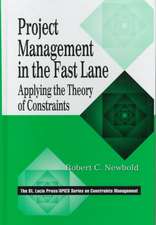Entrepreneurship and Economic Transition in Central Europe
Editat de Jean-Paul Larçonen Limba Engleză Paperback – 11 oct 2012
| Toate formatele și edițiile | Preț | Express |
|---|---|---|
| Paperback (1) | 638.11 lei 6-8 săpt. | |
| Springer Us – 11 oct 2012 | 638.11 lei 6-8 săpt. | |
| Hardback (1) | 644.30 lei 6-8 săpt. | |
| Springer Us – 31 oct 1998 | 644.30 lei 6-8 săpt. |
Preț: 638.11 lei
Preț vechi: 750.72 lei
-15% Nou
Puncte Express: 957
Preț estimativ în valută:
122.11€ • 130.57$ • 101.81£
122.11€ • 130.57$ • 101.81£
Carte tipărită la comandă
Livrare economică 17 aprilie-01 mai
Preluare comenzi: 021 569.72.76
Specificații
ISBN-13: 9781461379416
ISBN-10: 1461379415
Pagini: 248
Ilustrații: XXIV, 219 p.
Dimensiuni: 155 x 235 x 13 mm
Greutate: 0.35 kg
Ediția:1998
Editura: Springer Us
Colecția Springer
Locul publicării:New York, NY, United States
ISBN-10: 1461379415
Pagini: 248
Ilustrații: XXIV, 219 p.
Dimensiuni: 155 x 235 x 13 mm
Greutate: 0.35 kg
Ediția:1998
Editura: Springer Us
Colecția Springer
Locul publicării:New York, NY, United States
Public țintă
ResearchCuprins
1 Business Strategies for Economies in Transition of Central and Eastern Europe.- Return to Europe.- From plan to market: privatisation.- New economic and social environment.- Foreign trade and Foreign Direct Investment.- Strategies of international companies.- Conclusions.- Notes.- References.- 2 Privatisation and Company Restructuring in Central and Eastern Europe: Issues and Progress.- Why privatise at all?.- Who will own the firms?.- A taxonomy of mass privatisation.- Ownership structure in Central and Eastern Europe.- Conclusions.- References.- 3 Lessons from Czech Privatisation.- Privatisation as a key to transformation.- Privatisation forms and methods.- Present dilemmas and perspectives.- Notes.- References.- 4 Development of Financial Markets: the Czech Case.- The financial market revival.- Public markets.- Czech Stock Price Behaviour.- Conclusion.- Notes.- References.- 5 Competitiveness and Industry Restructuring: the Case of Hungary.- Microeconomic factors of competitiveness.- Seven main theses on competitiveness.- Conclusions.- References.- 6 The Ethical Fabric of a Transformation Economy: the Case of Hungary.- The social reception of market economy.- Ethical attitudes of Hungarian Managers.- Ethicality of companies.- Prospects for the future.- Notes.- References.- 7 Economic Growth and Foreign Direct Investment: the Polish Case.- Investment attractiveness in Poland.- Range and forms of foreign investors’ presence in Poland.- Influence of Foreign Direct Investment on Polish economy.- Conclusions.- References.- 8 Transition and Democracy in Romania: the Pain of a Gradualist Restructuring.- The economic and political legacy.- The political developments.- The economic performance and the structural changes.- De-monopolisation and the private sectorperformance.- Economic policy reforms.- External support and the role of FDI.- The privatisation of SOEs in Romania.- The economic and financial restructuring of industry.- Agriculture.- Foreign exchange controls affecting trading.- Conclusions.- Notes.- References.- 9 Company Co-operations between Eastern and Western Europe.- Reasons for macroeconomic analysis.- Analytical framework.- Innovation and strategic choices for SME.- SME and development.- Development and SME co-operation with Eastern Europe.- Conclusion.- Notes.- References.- 10 Swedish Multinationals in Central and Eastern Europe.- The project.- Objectives.- Frame of Reference.- Five cases on European Multinationals’ entry.- Tentative conclusions.- References.- 11 The Enlargement Challenge.- European governance and the enlargement challenge.- Uncertain enlargement and challenges for corporate governance.- Conclusion.- References.














